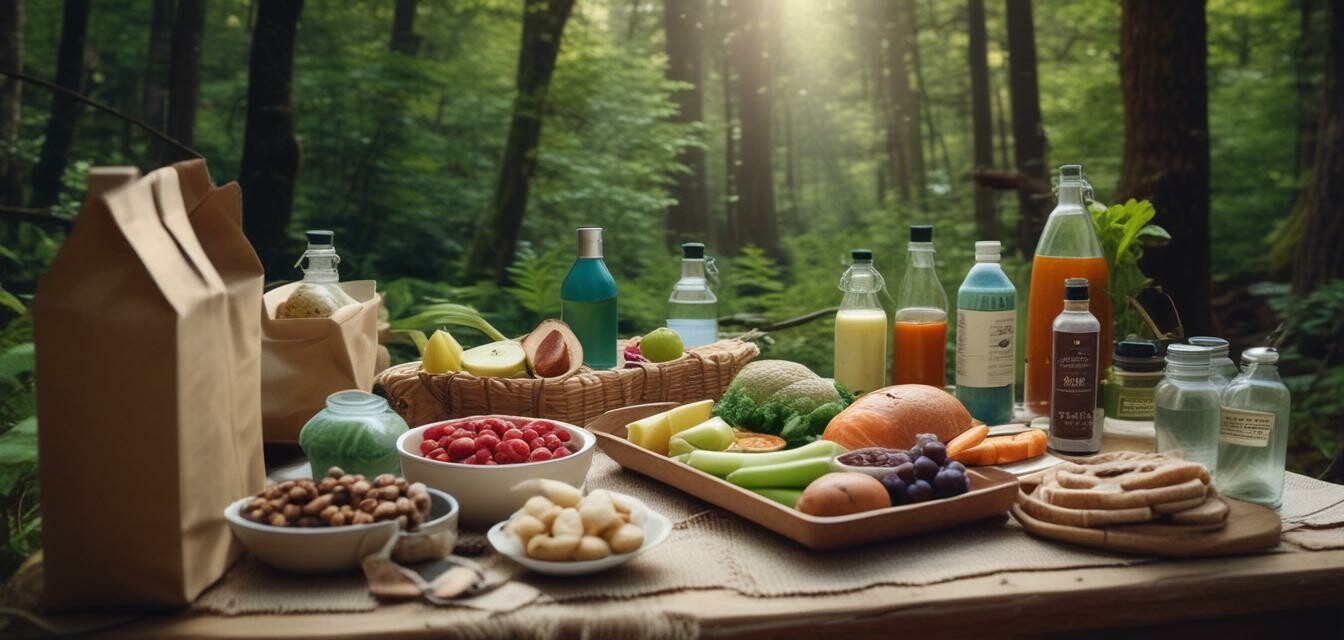
As an Amazon Associate, I earn from any qualifying purchases, at No Extra Cost to You.
The Impact of Sustainability on Backpacking Food Choices
Key Takeaways
- Sustainability is increasingly influencing backpackers' food choices.
- Eco-friendly packaging options minimize environmental impact.
- Locally sourced ingredients support local economies and reduce carbon footprints.
- Backpackers are adopting minimalist packing methods to reduce waste.
The rise of environmental awareness has transformed many industries, and backpacking is no exception. As outdoor enthusiasts seek ways to enjoy nature while preserving it, sustainability has become a crucial aspect of their food choices. This article will explore how sustainability is shaping food decisions among backpackers, focusing on eco-friendly packaging and locally sourced ingredients.
Importance of sustainability in backpacking
Backpacking allows individuals to connect with nature, but it also carries responsibilities towards the environment. Sustainable practices in food choice can help minimize ecological footprints while enriching the overall outdoor experience. Here are some key sustainability trends in backpacking:
- Reducing waste through smart packaging choices.
- Choosing plant-based meals for decreased resource consumption.
- Opting for packaged foods with minimal environmental impact.
Eco-friendly packaging options
One of the most noticeable shifts in the backpacking food landscape is the increase in eco-friendly packaging. Traditional single-use plastic has become less favorable among conscious travelers. Here are some alternatives:
| Packaging Type | Description | Benefits |
|---|---|---|
| Biodegradable packaging | Made from organic materials that decompose naturally. | Reduces plastic waste in landfills and oceans. |
| Reusable containers | Durable containers that can be packed and used multiple times. | Minimizes single-use products and saves money. |
| Compostable materials | Packaging that breaks down in composting environments. | Supports nutrient recycling in soil and reduces waste. |
Choosing the right packaging
When selecting food for backpacking, it’s essential to consider packaging options that align with sustainability goals. Here are some tips for making eco-friendly choices:
Tips for beginners
- Research brands that prioritize sustainability in their packaging.
- Opt for bulk items to significantly reduce packaging waste.
- Bring your own containers to avoid unnecessary single-use items.
Locally sourced ingredients
Another way that backpackers are embracing sustainability is by sourcing local ingredients. This trend supports community economies and reduces transportation emissions. Here’s why local sourcing is beneficial:
- Fresher food options that are often tastier and more nutritious.
- Celebration of regional cuisines and flavors, enriching the cooking experience.
- Support for small farmers and sustainable agricultural practices.
Finding local ingredients
Many backpackers are now embarking on journeys that include visits to farmer's markets or local stores, integrating locally sourced ingredients into their meals. Here are some strategies to find and incorporate local foods:
- Research in advance to locate farmers' markets along your route.
- Learn about the local seasonal produce to help guide meal planning.
- Engage with local businesses for tips on sourcing ingredients.
Impact on meal planning
Adopting sustainable practices not only influences food choices but also shapes overall meal planning. Backpackers are now considering pre-prepared meals that use eco-friendly packaging and emphasize local ingredients. This not only streamlines packing but also enhances the sustainable aspect of their journey.
Meal planning tips
Here are some meal planning strategies that align with sustainability:
More tips for beginners
- Plan ahead to ensure you have a balance of nutrients and flavors.
- Experiment with dehydrated local fare for lightweight packing.
- Include snacks that require minimal packaging, such as nuts and dried fruits.
Pros
- Contributes to environmental preservation.
- Encourages healthier eating habits.
- Supports local economies and farmers.
Cons
- Availability of local options may vary by region.
- Higher prices for organic or locally sourced products.
Conclusion
As sustainability continues to influence backpacking food choices, backpackers now enjoy a richer experience that aligns with environmentally friendly practices. From choosing eco-friendly packaging to sourcing local ingredients, the current trends are reshaping the way we think about food in the great outdoors. By prioritizing sustainability, outdoor adventurers can enjoy their meals guilt-free while caring for the planet.
For more insights on sustainable backpacking, check out our Backpacking Trends section for the latest on innovative practices and movements in the community.
Are you ready to embrace sustainability in your next backpacking adventure? Let us know your thoughts!